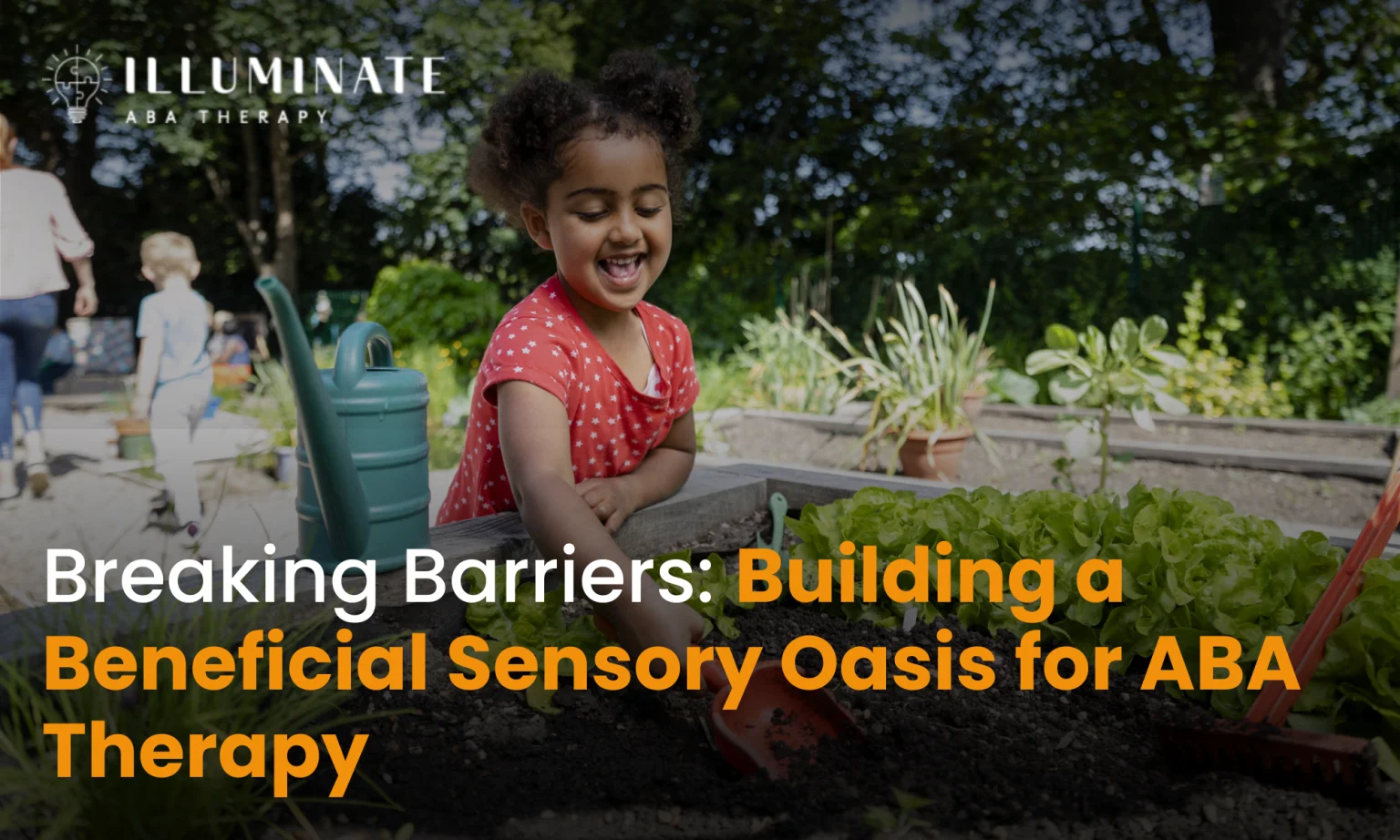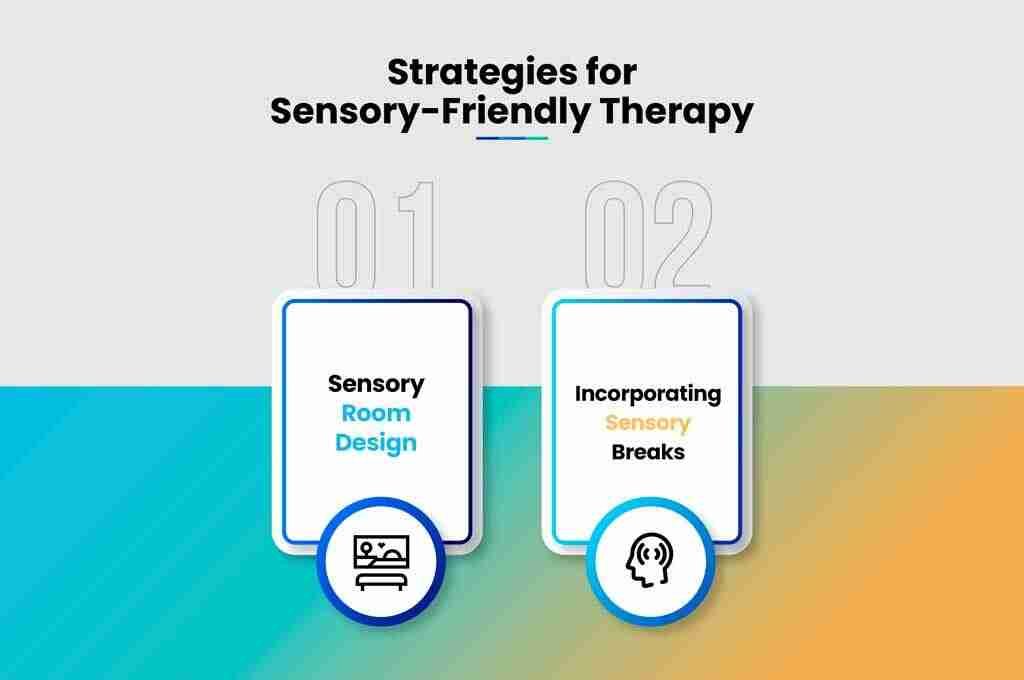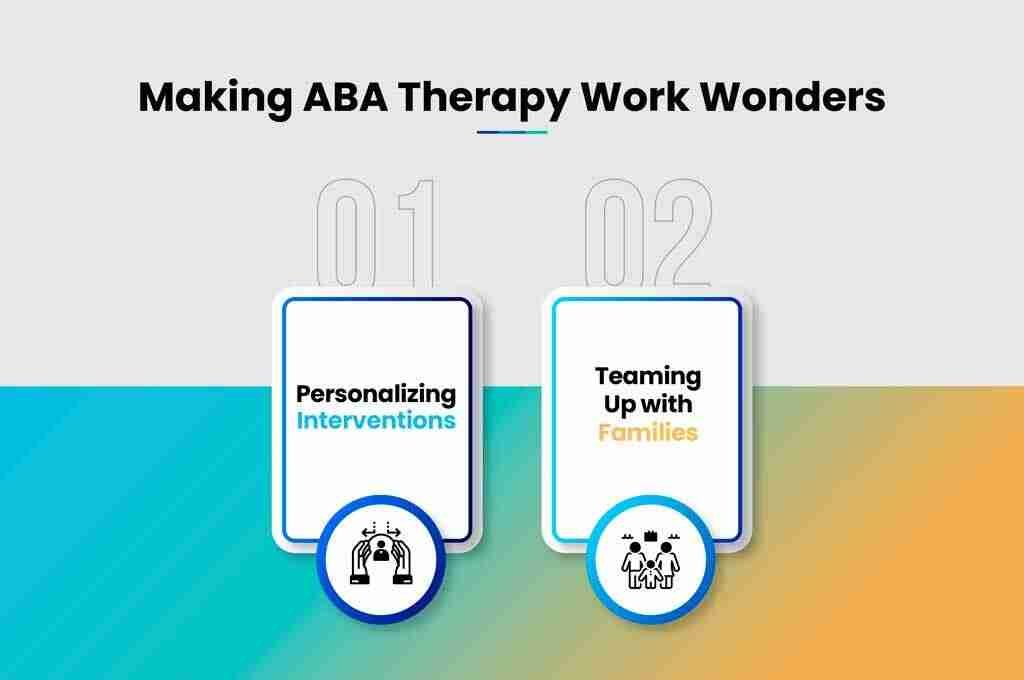Breaking Barriers: Building a Beneficial Sensory Oasis for ABA Therapy
ABA TherapyJuly 17, 2025

Creating a Supportive Environment
If you're trying to get the most out of ABA (Applied Behavior Analysis) for folks with autism, having a sensory-friendly environment is your go-to move. Let’s dig into two key parts: tweaking the space and adjusting the sensory stuff to meet the unique needs of those in ABA therapy.
Modifying the Physical Space
Your surroundings can have a big impact on how people act and feel, especially when it comes to autism. By changing things around in a careful way, you can cut down on behavior outbursts and make therapy smoother. Here are some things to keep in mind when fixing up the space:
- Simple and Chill Spaces: Keeping things mellow with neutral colors and simple designs helps avoid sensory overload. This vibe can foster calmness, a tip shared by George Braddock of Creative Housing Solutions.
- Lighting Tweaks: Play with lighting by using dimmer switches or warm lights to create a soothing space for someone with autism. Soft lighting cuts down on harsh stimuli and helps set a chill mood.
- Quiet It Down: Bust out some soundproofing—like noise-blocking curtains, thick rugs, or even a white noise machine—to muffle sounds that might set off sensitivities.
Adapting Sensory Stimuli
For people with autism, handling sensory info can be tricky. That’s why adjusting sensory inputs in therapy spaces is a game-changer. Tweaking the environment helps with sensory hiccups and makes therapy more effective. Try these ideas:
- Friendly Feels: Bring in sensory-friendly stuff—like soft materials or fidget toys—to give individuals a chance for tactile play and a sense of control.
- Soothing Visuals: Use calming images or visual guides to help navigate through daily activities, making it easier for those with autism to grasp what’s next.
- Hands-On Fun: Sensory bins and textured play surfaces are great for hands-on engagement and exploration, giving individuals a way to dive into sensorimotor fun.
By refining the space and tweaking sensory experiences, caregivers, teachers, and therapists can develop an inspiring atmosphere that boosts ABA therapy's effectiveness for those with autism. These thoughtful adjustments can make a world of difference in therapy, helping kids and adults alike to grow and make progress in skills and behaviors.
Strategies for Sensory-Friendly Therapy

When setting up a good spot for effective ABA therapy, getting on board with sensory-friendly strategies is like setting the stage for kids, especially those with autism. Dive into sensory rooms and the little time-outs we call sensory breaks—they’re like peanut butter and jelly for therapy.
Sensory Room Design
Think of sensory rooms as cozy nooks tailor-made for folks with sensory hiccups, including those on the autism spectrum. Imagine a sweet escape from the sensory hustle and bustle where folks can learn to juggle their senses better and handle life outside this peaceful bubble.
Studies say these rooms do wonders: they lower stress, tone down tantrums, boost learning, nudge focus northward, and nip those repetitive behaviors associated with autism. A chill spot like this helps folks kick back and find their emotional groove, making a hefty difference in how they feel each day.
Incorporating Sensory Breaks
Bringing sensory breaks into ABA therapy is like knowing when to pop in for a snack when you’re working late. These little pauses let folks catch their breath during therapy and help keep their engines running smooth. We're talking stuff like a big hug of pressure, playing with fidget gadgets, or taking a dive into sensory bins—whatever tickles their sensory fancy.
These breaks act like a pregame to dodge sensory overload and boost self-management. Sprinkle them through therapy, and you've got individuals ready to tackle sensory bumps and respond to what's thrown their way. It amps up their involvement in therapy, boosting how they pick up skills and work through behaviors.
By putting thought into sensory room vibes and weaving sensory breaks into the therapy fabric, caregivers, educators, and therapists can whip up a setting that turns sensory experiences into smooth sailing. This approach not only tunes in to the person's sensory needs but also propels them toward therapy goals, especially for kiddos with autism. It sets them up for triumph, weaving progress into every session.
Implementing Behavior Change
In the world of Applied Behavior Analysis (ABA) therapy, changing behavior isn't just about flipping a switch. It's about nurturing positive changes and tackling tricky behaviors with a good dash of patience and a heap of know-how. Central to this are two heavy hitters: giving props when it's due (a.k.a. positive reinforcement) and sticking to your guns with consistency.
Positive Reinforcement Tricks
Positive reinforcement like that secret sauce that makes a superhero outta everyday folks on the autism spectrum. It's in the goodies—cute smiles, hugs, extra time with favorite toys—that nudge folks to act just right when things get messy or tough. Discovering just what lights up an individual's world, and giving those rewards when they ace it, is kinda like magic in action.
In ABA, the knack lies in pairing those good deeds with rewards, cheers, or, say, a favorite game. Hang in there long enough, and you'll see those good behaviors turn up more often. This trick not only makes good habits stick but also helps to bloom brand-new ones.
The key is keeping it real and personal—crafting that reward strategy to fit just right with whoever's in therapy. Mix up the rewards and change up the schedule as they get better. With ABA experts nudging along, good behaviors can grow and stick around for the long haul.
Keeping It Steady
Think of consistency as the bedrock principle in ABA therapy. It’s about wearing the same hat every day when guiding someone through the maze of actions and reactions. A steady hand is what helps those on the autism spectrum "get it"—figuring out what's expected, fitting it into their daily groove, and using those smarts everywhere they go.
ABA's playbook on being steady includes leaving no stone unturned—clear, easy-to-follow directions, sticking with a steady clock for therapy shindigs, and making sure everyone's singing from the same song sheet when it comes to turning plans into action.
But this steadiness doesn’t end at therapy's gate—it spills over into everyday life, sprucing up how we talk, structure our day, and tweak surroundings. The calm and routine this brings? It’s the foundation that helps someone with autism feel like they’ve got a cuddly blanket around them, amping up their willingness to join in and soak up what therapy offers.
By weaving in the magic of positive reinforcement and hammering home the need for consistency in treatment, ABA therapy helps train behaviors that stick and matter. Tailored to fit the needs of each person, these proven ways can spark lasting behavior changes, boost social learning, and put individuals on a path to being their bright, best selves.
Making ABA Therapy Work Wonders

ABA therapy services can be a game-changer for kids with autism, especially when it's personalized and involves working closely with families. Creating a therapy plan that speaks directly to a child's unique world and having the whole family involved is the way to go for lasting success.
Personalizing Interventions
ABA thrives on getting personal. Every child has their own set of strengths and hurdles, and using these to tweak therapy methods works like magic. When therapists mix up their techniques to fit a child's rhythm and manage those tricky sensory issues, therapy doesn’t just become more effective—it gets a whole lot more fun, too. This approach dives into skill-building and helps kiddos improve behaviors in ways that stick long after sessions end.
You'll find ABA therapists pulling sensory rabbit tricks from their hats—think sensory breaks, using friendly materials and changing up the therapy room vibe. These tweaks can make all the difference in how a child with autism learns and communicates. Play activities designed to jive with what each child enjoys can help them join in more and manage their emotions, which is a big step toward learning new skills.
It's crucial to get why sensory issues matter and make the right changes so kids can shine, wherever they are. ABA puts a spotlight on self-regulation, showing kids how to navigate their sensory world. Simple tricks like taking a breather, deep breaths, or one-at-a-time tasks can change how they handle sensory overload and learn self-regulation.
Teaming Up with Families
Beyond just tweaking therapy, teaming up with families is huge for getting the most out of ABA. By cluing in caregivers on what's up and arming them with strategies, families can create a sensory-friendly home, extending benefits beyond therapy walls. This connection powers up interventions and helps kids carry those skills into the real world.
ABA therapists, by joining hands with families, offer a lifeline of support, advice, and resources for using ABA methods at home. Having the therapy playbook in every setting means kids benefit long after the session ends, boosting therapy outcomes and progress.
By mixing personal approaches with family teamwork, ABA therapy can truly touch lives by nurturing skills, boosting chatter, and uplifting life quality for kids with autism. This combined effort lays out a growth path that supports both therapy wins and day-to-day victories.
Read More: Inclusive ABA Strategies for Co-Occurring Conditions
